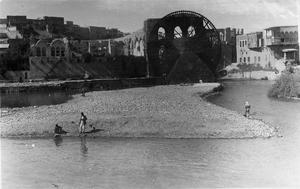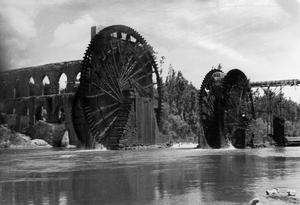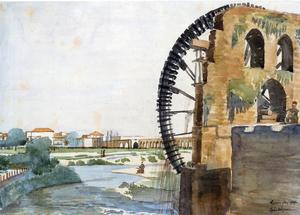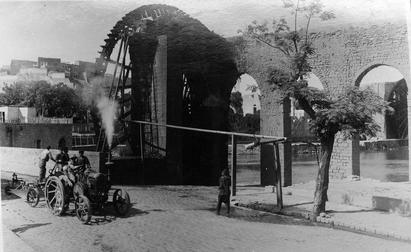
The Water Wheels of Hama
Very characteristic sights in Hama are the town’s old wooden water wheels, called noria (“wheel of pots”), which line the Orontes River. They have been called the most beautiful norias ever built.
The water wheels were needed because the river was too deeply cut to easily and directly acquire water for use.
The current of the river moved the wheels, and wooden buckets on the wheels picked up water from the river and emptied it into the aqueducts or other channeling systems at the summit of the wheel’s rotation. Gravity led the water along the aqueducts to its destination in various parts of the town such as mosques and cisterns connected to houses. Water was also directed to the irrigation of nearby gardens and agricultural fields.
Carefully worked out schedules regulated access to the water so that it could be shared.
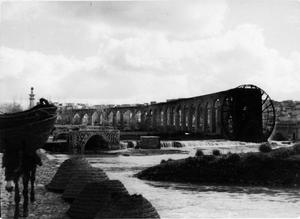
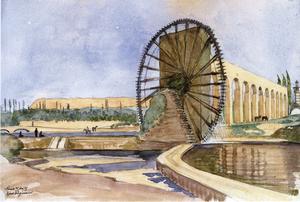
The largest water wheel, Na’ura al-Muhammadiya, measures around 20 meters in diameter. It provided water for the Great Mosque via an aqueduct with 32 arches. Na’ura al-Muhammadiya was built in 1361 CE.
It is not clear when the first water wheels were built. A Byzantine mosaic from the site of Apamea, not far from Hama, depicts a water wheel and dates from 469 CE.
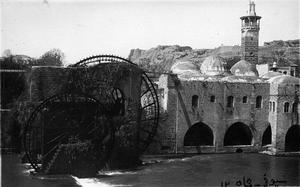
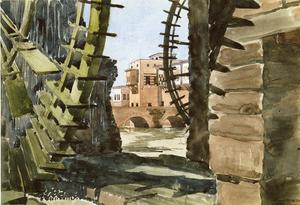
According to the medieval writer Yakut (ca.1225), there were several water wheels in Hama already around 884 CE. However, none of the surviving water wheels in Hama can be dated earlier than the Ayyubid Dynasty founded by Saladin ca.1171.
Around 1900 there were more than 50 water wheels in Hama. This number had dwindled to around 20 in the 1930’s when the Danish archaeologists were living in the town.
In 2002 there were still 17 in the town, all of which had gone out of use by 2009. They remain a major tourist attraction.

